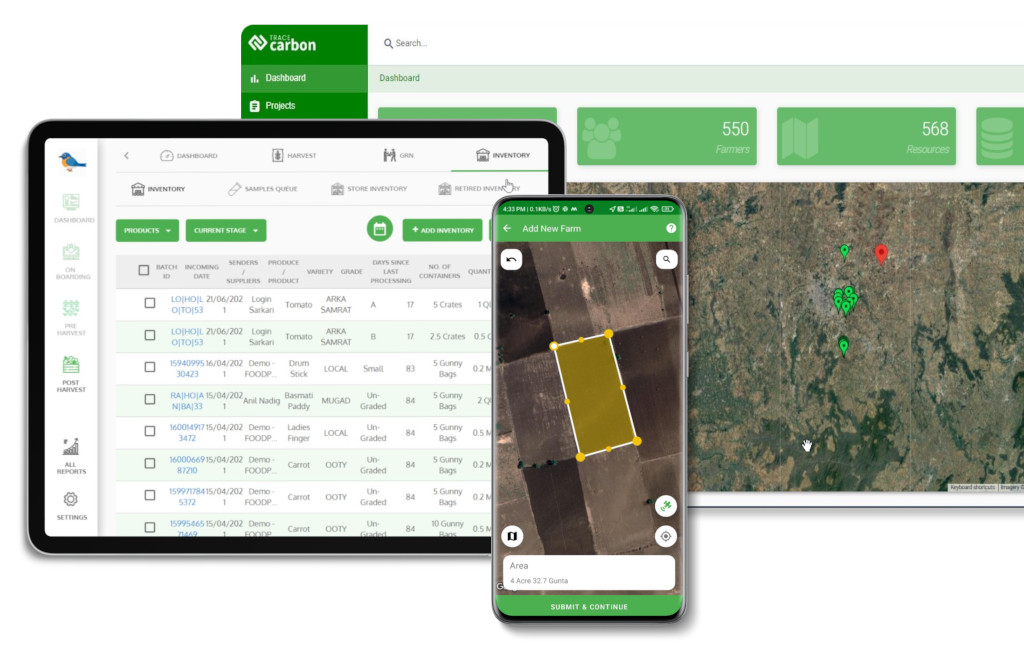Contact: +91 99725 24322 |
Menu
Menu
Quick summary: Discover the top procurement team challenges in EUDR compliance and how to solve them with digital traceability, AI validation, and TRACES-ready DDS workflows.

Procurement Challenges in EUDR Compliance often stem from fragmented supplier data, missing GeoJSON files, and reliance on PDFs or self-declarations. Procurement teams must ensure that all suppliers provide farm-level geolocation, legality documents, and shipment-specific evidence packs to support Due Diligence Statements (DDS). Delays occur when this data is incomplete or disconnected from purchase orders and bills of lading, creating audit risks. The solution lies in embedding EUDR into procurement workflows, through supplier onboarding portals, AI-driven data validation, blockchain audit logs, and TRACES-ready DDS automation, to streamline compliance and secure EU market access.
Most companies think of EUDR as a compliance or legal function, but the reality is different. Procurement teams are now on the frontline of EUDR. Every purchase order, every supplier contract, and every shipment must carry compliance-ready evidence or risk rejection at the EU border.
Without embedding EUDR requirements into procurement workflows, right from PO creation to supplier onboarding, your goods may never make it past customs. Missing GeoJSONs, legality documents, or risk assessments don’t just slow compliance officers down; they can stall entire shipments, erode buyer trust, and shut SMEs out of EU markets.
This guide offers a step-by-step playbook to integrate EUDR compliance directly into procurement: from supplier qualification and digital onboarding to AI-driven validation and TRACES-ready DDS preparation. Done right, compliance isn’t just a safeguard—it becomes a competitive advantage that strengthens contracts, reduces risks, and ensures seamless EU market access.
Key Takeaways
It means procurement teams must secure GeoJSONs, legality documents, and risk notes from suppliers and guarantee lot-level traceability, since DDS must be filed before goods enter the EU market.
The EU Deforestation Regulation (EUDR) isn’t just a compliance formality, it reshapes how procurement teams operate. The rule is clear: a Due Diligence Statement (DDS) must be filed before goods can enter EU markets. That means procurement can no longer rely on purchase orders and contracts alone.
Procurement must now ensure suppliers provide:
And here’s the tough part: mass balance is not allowed. If a lot mixes compliant and non-compliant sources, the entire batch fails. Procurement teams must therefore secure lot-level traceability, linking each shipment to its exact origin without dilution.
Procurement is no longer just about price and quality, it’s about data integrity. In EUDR, procurement becomes the compliance gatekeeper, bridging farm-level evidence with TRACES-ready DDS filings.
Want to go beyond compliance?
Explore our blogs on
Sustainable sourcing strategies for EUDR
How the EUDR system works to build resilient, future-ready supply chains.
On paper, procurement teams know their suppliers. But under EUDR, knowing names and contracts isn’t enough, you need plot-level geolocation, legality documents, and verifiable risk data. And this is where many procurement functions stumble:
For years, procurement has trusted supplier declarations and scanned certificates. Under EUDR, these are no longer sufficient. PDF maps or scanned permits won’t pass a TRACES audit.
What was “good enough” for certifications is now non-compliant noise. Procurement needs structured, machine-readable data.
Most suppliers, especially smallholders, have never prepared a GeoJSON file. Without training or digital support, procurement gets incomplete or invalid geolocation data
Compliance isn’t just about collecting data, it’s about building supplier capacity. Procurement must act as an educator, not just a collector.
Many teams still juggle Excel sheets, PDFs, and long email chains to manage supplier data. When an audit or DDS filing deadline hits, the scramble begins.
Fragmentation is the hidden risk. Procurement leaders must treat compliance records like financial records, centralized, auditable, and secure.
Traditionally, procurement focuses on cost and delivery, while compliance/legal sits downstream. EUDR changes this dynamic, procurement decisions directly determine compliance status.
Procurement isn’t just sourcing products anymore; it’s sourcing proof.
Procurement is now the compliance gatekeeper. A purchase order is no longer just a commercial agreement; it’s a compliance commitment. Without embedding EUDR requirements into procurement workflows, businesses risk failing before customs even looks at the shipment.
Procurement teams can no longer treat compliance as a downstream task. Under EUDR, procurement is the first line of defense. Here’s how to embed EUDR requirements directly into procurement workflows:

Before signing contracts, assess whether suppliers can provide GeoJSON farm polygons, legality documents, and shipment-specific risk notes.
Add clauses that make GeoJSON and legality documentation a contractual requirement. Link compliance deliverables directly to purchase orders.
Use digital portals to let farmers and suppliers upload data in structured formats. Replace endless emails and PDFs with standardized workflows.
Deploy AI or digital tools to flag issues like missing polygons, overlapping deforested land, or expired permits.
Bundle supplier data into shipment-specific evidence packs tied to purchase orders and bills of lading. This ensures traceability aligns with actual trade flows.
Store every GeoJSON, DDS, and legality doc securely in digital systems. Regulators can request them at any time.
EUDR integration isn’t about adding extra steps, it’s about re-engineering procurement as compliance by design. The companies that embed compliance early won’t just avoid penalties—they’ll win trust, buyers, and long-term market access.
For procurement teams, EUDR compliance can feel overwhelming when handled with spreadsheets, PDFs, and back-and-forth emails. The reality: without digital EUDR tools, it’s nearly impossible to stay audit-ready. Here’s how technology transforms compliance from a bottleneck into a business enabler:
Instead of chasing suppliers for documents, portals allow farmers and cooperatives to upload GeoJSONs, permits, and IDs directly in standardized formats.
AI engines check geolocation files for geometry errors, CRS format issues, and overlaps with deforested land while verifying permit validity.

All evidence is stored in immutable logs for regulators, ensuring nothing can be tampered with.
Automated workflows assemble shipment-specific evidence packs, linking purchase orders and bills of lading directly to DDS drafts.
These tools aren’t just about ticking regulatory boxes, they redefine procurement compliance automation. By embedding compliance into daily procurement workflows, businesses move faster, reduce risk, and earn the trust of EU buyers who need reliable, audit-ready partners.

Procurement teams don’t just need tools, they need a system that makes compliance flow naturally into daily operations. TraceX EUDR Platform solves this by embedding EUDR into every procurement touchpoint:
Every supplier record, GeoJSON file, and legality document is directly linked to purchase orders and bills of lading.
Compliance isn’t an afterthought, it’s part of the transaction record itself.
TraceX AI checks geolocation formats, permit validity, and deforestation risks, assigning scores suppliers and shipments.
Procurement leaders get visibility on which suppliers are high-risk before committing to contracts.

Procurement teams and their EU buyers receive TRACES-ready DDS evidence packs automatically, no manual assembly needed.
Instead of scrambling at shipment time, you hand buyers a “compliance briefcase” they can file instantly.
Different teams, procurement, QA, legal, see the same data in tailored views. Everyone works from a single source of truth.
No more silos. Compliance collaboration happens in real time.
EUDR shifts procurement from a transactional role to a compliance-critical one. While challenges like fragmented supplier data, missing GeoJSONs, and reliance on PDFs can stall shipments, digital traceability tools turn these weak points into strengths. By embedding compliance into contracts, POs, and supplier onboarding, procurement teams can move from chasing documents to enabling frictionless EU market access. In practice, the companies that solve procurement’s compliance challenges early will not just survive audits—they’ll win long-term trust with buyers.
Ready to master EUDR workflows?
Learn how
Due diligence best practices and the
fits together to keep your supply chain compliant.
Common issues include missing or invalid GeoJSONs, reliance on supplier self-declarations, fragmented records across spreadsheets and emails, and poor alignment with compliance teams.
By integrating compliance into procurement workflows, adding EUDR clauses in POs, onboarding suppliers digitally, automating risk checks, and linking POs to DDS filings.
Because procurement controls supplier selection and contract terms, it is the gatekeeper for compliance. Without procurement embedding requirements, DDS filings risk failure.
